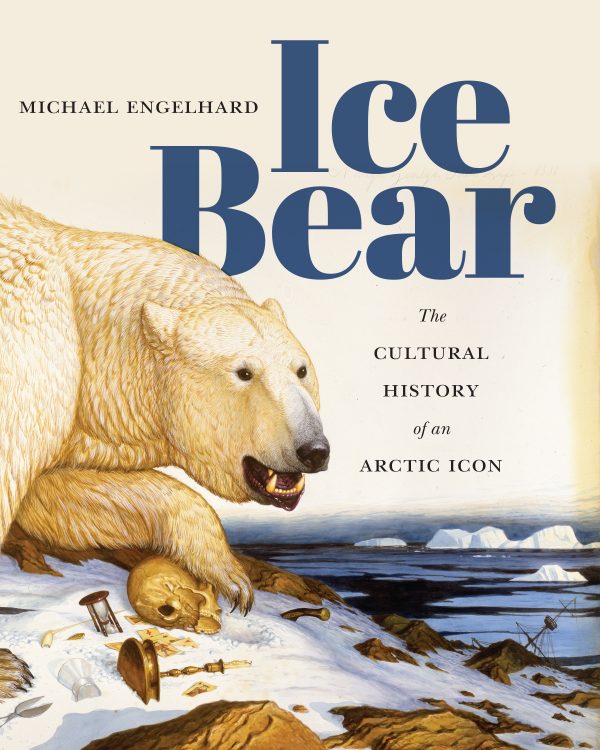Ice Bear: The Cultural History of an Arctic Icon, by Michael Engelhard
I, who normally shun crowds, had shown up at a Fairbanks political rally with a crude homemade sign: Polar Bears want babies, too. Stop our addiction to oil! I was protesting recurring attempts to open the Arctic National Wildlife Refuge, the area with the highest concentration of polar bear dens in Alaska, to drilling. As we were marching and chanting, I checked the responses of passersby. A rattletrap truck driving down Airport Way caught my eye. The driver, a stereotypical crusty Alaskan, showed me the finger. Unbeknownst to him, his passenger—a curly haired, grandmotherly Native woman, perhaps his wife—gave me a big, cheery thumbs-up.
The incident framed opposing worldviews within a single snapshot but did not surprise me. My home state has long been contested ground, and the bear a cartoonish, incendiary character. Already in 1867, when Secretary of State William H. Seward purchased Alaska from Russia, the Republican press mocked the new territory as “[President] Johnson’s polar bear garden”—where little else grows. (From Ice Bear, by Michael Engelhard)
Prime Arctic predator and nomad of the sea ice and tundra, the polar bear endures as a source of wonder, terror, and fascination. Humans have seen it as spirit guide and fanged enemy, as trade good and moral metaphor, as food source and symbol of ecological crisis. Eight thousand years of artifacts attest to its charisma, and to the fraught relationships between our two species. In the White Bear, we acknowledge the magic of wildness: it is both genuinely itself and a screen for our imagination.
Ice Bear traces and illuminates this intertwined history. From Inuit shamans to Jean Harlow lounging on a bearskin rug, from the cubs trained to pull sleds toward the North Pole to cuddly superstar Knut, it all comes to life in these pages. With meticulous research and more than 170 illustrations, the author brings into focus this powerful and elusive animal. Doing so, he delves into the stories we tell about Nature—and about ourselves—hoping for a future in which such tales still matter.
“Everybody loves polar bears but few likely know, or have ever pondered, why. In Ice Bear, Michael Engelhard weaves together the disparate pieces of our eclectic social and cultural fascination with polar bears. A tapestry of images reveals our complex attachment to this Arctic icon.” —Andrew Derocher, author of Polar Bears: A Complete Guide to their Biology and Behavior
“Beautifully written and tellingly illustrated, Engelhard’s Ice Bear sits on top of our world, regnant, threatened, intrinsically and endlessly evocative of the ever vexed meeting of human and natural history.” —Philip Hoare, author of The Sea Inside
Michael Engelhard works as a wilderness guide in Arctic Alaska and holds an MA in cultural anthropology from the University of Alaska Fairbanks. His books include Where the Rain Children Sleep: A Sacred Geography of the Colorado Plateau, and a new essay collection, American Wild: Explorations from the Grand Canyon to the Arctic Ocean. His writing has also appeared in Sierra, Outside, Audubon, National Wildlife, National Parks, High Country News, and the San Francisco Chronicle. After living in Nome—at the edge of the White Bear’s range—he relocated to Fairbanks again, because he missed the Interior’s summers too much. Ice Bear is available in paperback and as an e-book from the University of Washington Press.

